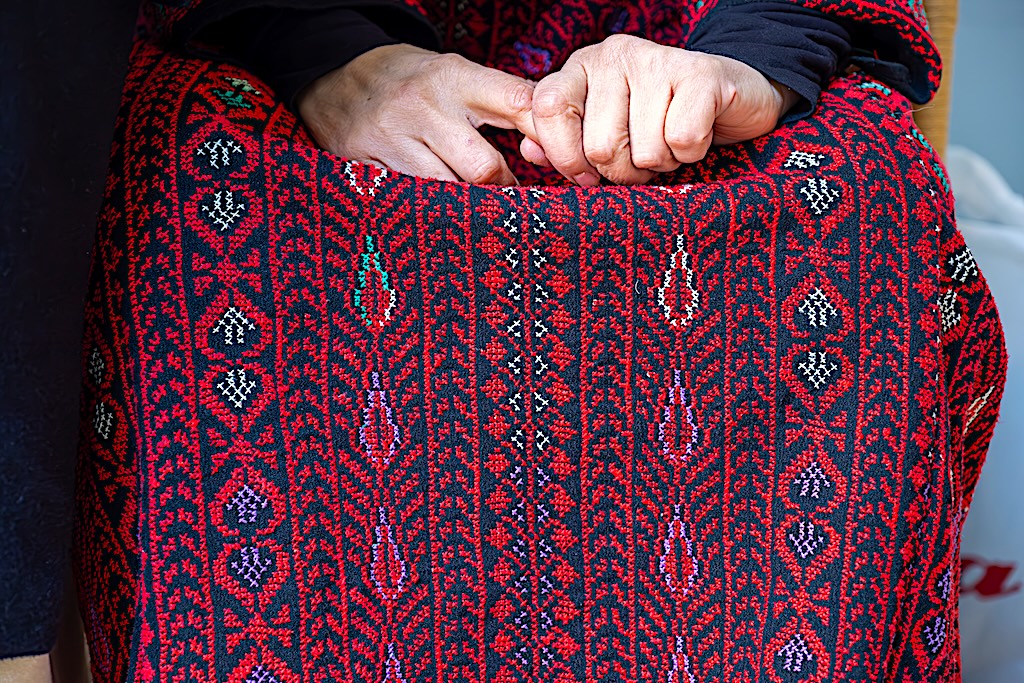Traditional clothing in Arab culture is considered a true reflection of identity and heritage. It is not merely ordinary attire, but rather a representation of the history, customs, and deeply rooted social and religious values of the people. This clothing carries multiple civilizational, religious, cultural, and artistic dimensions, reinforcing an individual’s belonging to their community and expressing a deep sense of authenticity.
Arab countries are distinguished by a clear diversity in their traditional attire. In the Maghreb region, the caftan and djellaba symbolize Moroccan elegance, while the Gulf region is known for the dishdasha, ghutra, and agal, which express local identity. In Egypt, the galabeya is part of everyday life, whereas in the Levant, the sirwal and sharshabaremain key elements of traditional clothing. Women often favor wearing abayas and embroidered dresses, especially on social occasions and weddings, as this reflects an appreciation for beauty and distinction.
Traditional attire is not limited to its appearance; it also embodies the values of modesty and refinement that Arab societies uphold. These garments are designed to suit the environmental and climatic conditions of each region: loose, light clothing for hot climates, and heavier, warmer garments for colder regions.
Over time, traditional dress has retained its symbolic significance, being worn on official and festive occasions as a source of pride and distinction. It plays a vital role in strengthening cultural identity and connecting younger generations with the heritage of their ancestors. Moreover, traditional tailoring and embroidery are considered crafts that require skill and creativity, contributing significantly to local economies in several Arab countries.
Finally, there is a growing contemporary trend to combine traditional and modern clothing styles, seeking to highlight both authenticity and openness at once. Artistic platforms and exhibitions that bring together heritage and modernity help promote the presence of traditional clothing both in the Arab world and globally, granting it a renewed place in the age of cultural globalization.
يُعْتَبَرُ اللِّبَاسُ التَّقْلِيدِيُّ فِي الثَّقَافَةِ العَرَبِيَّةِ انْعِكَاسًا حَقِيقِيًّا لِلهُوِيَّةِ وَالتُّرَاثِ، فَهُوَ لَيْسَ مُجَرَّدَ مَلابِسَ اعْتِيَادِيَّةٍ، بَلْ يُمَثِّلُ تَجْسِيدًا لِمَا تَحْمِلُهُ الشُّعُوبُ مِنْ تَارِيخٍ وَعَادَاتٍ وَقِيَمٍ اجْتِمَاعِيَّةٍ وَدِينِيَّةٍ رَاسِخَةٍ. يَرْتَبِطُ هَذَا اللِّبَاسُ بِأَبْعَادٍ حَضَارِيَّةٍ وَدِينِيَّة وَثَقَافِيَّةٍ وَفَنِّيَّةٍ مُتَعَدِّدَةٍ، تُرَسِّخُ انْتِمَاءَ الفَرْدِ لِمُجْتَمَعِهِ وَتُعَبِّرُ عَنْ عُمْقِ الأَصَالَةِ.
تَتَمَيَّزُ الدُّوَلُ العَرَبِيَّةُ بِتَنَوُّعٍ وَاضِحٍ فِي أَشْكَالِ أَزْيَائِهَا التَّقْلِيدِيَّةِ؛ فَفِي المَغْرِبِ العَرَبِيِّ يَظْهَرُ القُفْطَانُ وَالجَلاَّبَةُ كَرَمْزَيْنِ لِلأَنَاقَةِ المَغْرِبِيَّةِ، أَمَّا مَنَاطِقُ الخَلِيجِ فَتُعْرَفُ بِـالدِّشْدَاشَةِ وَالغُتْرَةِ وَالعِقَالِ الَّتِي تُعَبِّرُ عَنِ الخُصُوصِيَّةِ المَحَلِّيَّةِ. وَفِي مِصْرَ، تُعَدُّ الجَلاَّبِيَّةُ جُزْءًا مِنَ الحَيَاةِ اليَوْمِيَّةِ، بَيْنَمَا نَجِدُ فِي الشَّامِ السِّرْوَالَ وَالشَّرْشَبَةَ عَنَاصِرَ أَصِيلَةً ضِمْنَ المَلْبَسِ التَّقْلِيدِيِّ. وَغَالِبًا مَا تُفَضِّلُ النِّسَاءُ ارْتِدَاءَ العَبَاءَاتِ وَالثِّيَابِ المُطَرَّزَةِ وَالمُزَخْرَفَةِ، خُصُوصًا فِي المُنَاسَبَاتِ الاجْتِمَاعِيَّةِ وَالأَعْرَاسِ، حَيْثُ يَعْكِسُ ذَلِكَ الاِهْتِمَامَ بِالجَمَالِ وَالتَّمَيُّزِ.
وَلا يَقْتَصِرُ الأَمْرُ عَلَى الشَّكْلِ فَقَطْ، بَلْ يَرْتَبِطُ أَيْضًا بِقِيمَةِ الاِحْتِشَامِ وَالرُّقِيِّ الَّتِي يُولِيهَا المُجْتَمَعُ العَرَبِيُّ لِمَظْهَرِهِ العَامِّ، كَمَا تُصَمَّمُ هَذِهِ المَلابِسُ بِمَا يَتَنَاسَبُ مَعَ الظُّرُوفِ البِيئِيَّةِ وَالمُنَاخِ المَحَلِّيِّ لِكُلِّ مَنْطِقَةٍ؛ إِذْ نَجِدُ المَلابِسَ وَاسِعَةً وَخَفِيفَةً تَتَلاَءَمُ مَعَ الطَّقْسِ الحَارِّ، أَمَّا فِي المَنَاطِقِ البَارِدَةِ فَتَكُونُ أَثْقَلَ وَأَكْثَرَ دِفْئًا.
وَمَعَ مُرُورِ الزَّمَنِ، ظَلَّ اللِّبَاسُ التَّقْلِيدِيُّ مُحْتَفِظًا بِرَمْزِيَّتِهِ، حَيْثُ يَرْتَدِيهِ الأَفْرَادُ فِي المُنَاسَبَاتِ الرَّسْمِيَّةِ وَالاِحْتِفَالِيَّةِ لِكَوْنِهِ مَصْدَرًا لِلْفَخْرِ وَالتَّمَيُّزِ، وَلَهُ دَوْرٌ وَاضِحٌ فِي تَعْزِيزِ الهُوِيَّةِ الثَّقَافِيَّةِ وَرَبْطِ الأَجْيَالِ الجَدِيدَةِ بِجُذُورِ أَجْدَادِهَا. بِالإِضَافَةِ إِلَى ذَلِكَ، تُعَدُّ مِهَنُ الخِيَاطَةِ وَالتَّطْرِيزِ التَّقْلِيدِيَّةُ مِنَ الفُنُونِ الَّتِي تَتَطَلَّبُ مَهَارَةً وَإِبْدَاعًا، وَتُشَكِّلُ رَافِدًا هَامًّا لِلاِقْتِصَادِ المَحَلِّيِّ فِي عَدَدٍ مِنَ الدُّوَلِ العَرَبِيَّةِ.
وَأَخِيرًا، يُمْكِنُ مُلاَحَظَةُ التَّوَجُّهِ المُعَاصِرِ نَحْوَ الجَمْعِ بَيْنَ اللِّبَاسِ التَّقْلِيدِيِّ وَالعَصْرِيِّ، فِي مُحَاوَلَةٍ لِإِبْرَازِ الأَصَالَةِ وَالاِنْفِتَاحِ فِي آنٍ وَاحِدٍ. كَمَا تُسْهِمُ المَنَصَّاتُ الفَنِّيَّةُ وَالمَعَارِضُ الَّتِي تَجْمَعُ بَيْنَ التُّرَاثِ وَالحَدَاثَةِ فِي تَعْزِيزِ حُضُورِ اللِّبَاسِ التَّقْلِيدِيِّ عَرَبِيًّا وَعَالَمِيًّا، مِمَّا يُمْنَحُهُ مَكَانَةً مُتَجَدِّدَةً فِي ظِلِّ العَوْلَمَةِ الثَّقَافِيَّةِ المُعَاصِرَةِ.
https://forms.gle/2zNvV7SHbKppm8hF7 اختبر نفسك
Test yourself https://forms.gle/xBGMZvc5DZuC8aRe8

